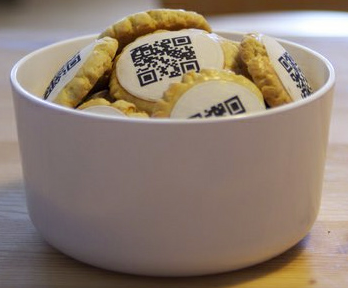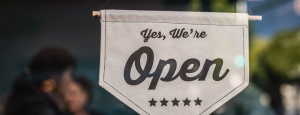The first time I saw a QR code was on the corner of a Lion King poster in a New York City subway. Though I had no clue what it was, my friend eagerly whipped out her BlackBerry, ready to give her recently downloaded QR code reader a test drive.
QR Codes (short for Quick Response Codes) like the one I saw on the subway popped up everywhere in 2011, from subways to product packaging, magazines to department stores, and even on cookies. It was so popular that it seemed like brands slapped codes on everything without thinking about how it would be used and its value to the shopper.
For example, Austin-based restaurant Juan in a Million sports a QR code on their dine-in menu. When scanned, the code takes you to a Google map of the restaurant’s location. How does this bring value to the customer if they’re already there? As awareness of QR Codes grew, I felt as though many brands were misusing them. I saw a QR code on a highway billboard once. How am I supposed to scan that at 65 mph? The many QR code failures frustrated me. However, one year later, I think that some brands are finally getting it right.
Sears and Kmart strategically catered to on-the-go holiday shoppers this past season with mobile shopping walls placed in high-traffic areas like movie theaters and airports. The walls displayed images of their most popular children’s toys as well as QR codes that gave shoppers a wealth of relevant information, including product pricing, delivery details, and the ability to purchase the toy on the spot. These QR executions worked well because they extended shopping beyond the store while making it convenient and easy.
Similarly, Walmart is using QR codes to test an “endless aisle” concept. About 100 locations are posting signs displaying QR codes that, when scanned using the Walmart app, offer shoppers a broader selection of products than what’s already on the shelves. To further extend the aisle, Walmart.com recently partnered with P&G for a month-long initiative to engage urban shoppers. They are introducing pop-up stores in Chicago and mobile truck stores in Manhattan where shoppers can scan QR codes to purchase P&G household items. It saves shoppers the hassle of lugging large items through the subway and time as well.
Since that first QR code I saw on the subway, much has changed. First-generation codes were often valueless to shoppers because they did not provide a true mobile first moment of truth. But executions as of late are providing value in terms to convenience and time-saving. Moving forward, it is increasingly important for retailers and brands using QR codes to integrate them in functional and innovative ways. If scanning QR codes doesn’t consistently deliver some kind of added value, shoppers won’t be back for seconds.
Contributed by: Kelsey Reddick, Integer Denver
Photo Source: Springwise


